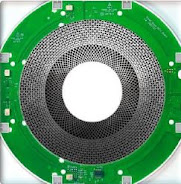The Board affirmed a Section 2(e)(1) refusal to register the proposed mark SMART BEZEL, finding it to be merely descriptive of electronic sensor modules for controlling and integrating home automation systems, lighting systems, and smart heating systems [SMART disclaimed]. Applicant Zuma Array contended that its goods are not bezels and so the mark cannot describe the goods. The Board, however, found the mark to be descriptive of a use or purpose of the modules, and thus ineligible for registration without proof of acquired distinctiveness. In re Zuma Array Limited, 2020 USPQ2d 736 (TTAB 2022) [precedential] (Opinion by Judge Christopher Larkin).
Zuma acknowledged that "smart" is defined as "using a built in microprocessor" and the word "bezel" refers to "the outer frame of a computer screen, mobile phone or other electronic device." However, it asserted, "none of the applied for goods ... feature a 'bezel' at all." Examining Attorney Michael FitzSimons maintained that the proposed mark immediately conveys information about the goods because Zuma's sensors are designed to be incorporated into the bezels of various electronic appliances and lighting and heating systems, "to render the bezels ... capable of performing automatic operations for processing data or achieving greater versatility."
The Board noted "with some surprise" that neither Zuma nor the Office discussed the nature of "electronic sensor modules." The Board took judicial notice that a "module" is "a usually packaged functional assembly of electronic components for use with ... other assemblies." It then observed that a proposed mark that describes the intended use or purpose of the goods with which it is used is merely descriptive.
Applicant Zuma's website states that "swap[ping] out a standard for a Smart Bezel (TM)" enables homeowners to access a wide range of built-in sensors to support environmental, presence and life safety operations." Thus, the word BEZEL refers to the type of device on which Zuma's sensors will be used.
The commercial context of Applicant's use of its proposed mark on its website "demonstrates that a consumer would immediately understand the intended meaning of" SMART BEZEL for electronic sensor modules, N.C. Lottery, 123 USPQ2d at 1710, namely, that the modules are used to create a "smart bezel."
Finally, the Board pointed out once again that even if Zuma were the first and only usee of the proposed mark, the mark may still be shown to be merely descriptive of the identified goods.
And so, the Board affirmed the refusal.
Read comments and post your comment here.
TTABlogger comment: My computer monitor has a dumb bezel.
The content of this article is intended to provide a general guide to the subject matter. Specialist advice should be sought about your specific circumstances.


